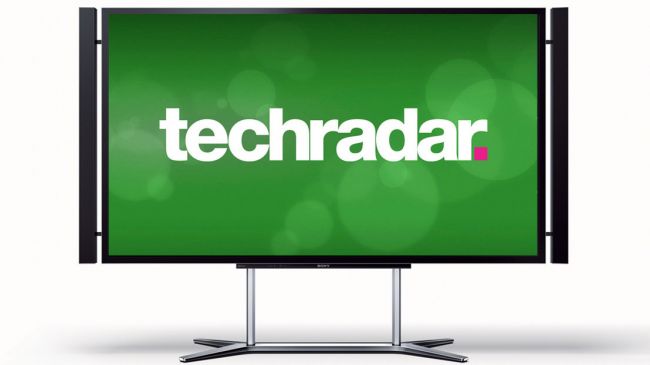Update: Don't get scammed by 4K-compatible HDMI cables! Check out the "What kind of cables will I need" section below for more information.
4K: Everyone wants it and no one knows why. It's the hottest techy buzzword of 2015, and it's a technology that's rewriting the rulebook when it comes to image quality.
It affects not just the world of 4K TV and cinema, but also cameras and image capture, smartphones and tablets, computer monitors and PC games - practically anything that displays images or records video.
4K TV sets are now available from most of the major TV manufacturers - i.e. Sony's impossibly slim Android TV, LG's OLED or Samsung's SUHD series of TVs - but they're merely the tip of a very cool technology iceberg.
So what, we hear you ask, is 4K really all about?
What is 4K?The headline fact is simple and dramatic: 4K Ultra HD TVs (also known as UHD TVs) deliver four times as much detail as 1080p Full HD, that's eight million pixels compared to two million pixels.
What that means in terms of potential image clarity is more fine detail, greater texture and an almost photographic emulsion of smoothness.
But this is just for starters. Prior to a roll-out of TV services, broadcasters are working out what else they can upgrade under the 4K banner. In the UK, a working group chaired by the BBC and BSkyB are mulling over every possible tweak, from higher frame rates to greater contrast and a wider colour spectrum. Some of the biggest names in the video industry including Samsung, LG and Sony have split-off to form another group called the UHD Alliance, which will work to set standards for the new format.
But talk to the engineers steering this 4K broadcast bandwagon and they'll tell you everything spec-wise is up for grabs. If this indicates to you that the 4K standard is anything but set in stone, you'd be correct.
Ultra HD is going to be a work in progress for years to come, but that doesn't mean you should wait for the dust to settle before improving your image.
What's new with 4K TVs? The IHS predicts there will be almost 1 million 8K televisions sold by 2019.
Difference between Ultra HD and 4K
Technically, "Ultra High Definition" is actually a derivation of the 4K digital cinema standard. However while your local multiplex shows images in native 4096 x 2160 4K resolution, the new Ultra HD consumer format has a slightly lower resolution of 3840 X 2160.
This is one reason why some brands prefer not to use the 4K label at all, sticking with Ultra HD or UHD instead. However, the numerical shorthand looks likely to stick. As a broad brush label it's so much snappier!
Why should I care about 4K Ultra HD?
There are many reasons why 4K should make you rethink your next TV purchase (actually, there are eleven and you can read about them here), not all of them immediately obvious.
Photographers who routinely view their work on an HD TV are seeing but a fraction of the detail inherent in their pictures when they view them at 2160p.
A 4K display reveals so much more nuance and detail – the difference can be astonishing. While 3D has proved to be a faddish diversion, 4K comes without caveats. Its higher resolution images are simply better.
The higher pixel density of a 4K panel also enable you get much closer without the grid-like structure of the image itself becoming visible –this means you can comfortably watch a much larger screen from the same seating position as your current Full HD panel. Currently all available 4K Ultra HD TVs are in excess of 50-inches.
Projectors
While 4K UHD TVs are on the fast track, the same can't be said for video projectors. Only Sony offers 4K models, the high-end quasi pro VPL-VW1100ES and the home cinema friendly VPL-VW500ES.
Currently there's no consumer 4K solution for LCD, D-ILA or DLP projectors, although that's likely to change in 2015, when Texas Instruments is expected to begin shipping its first 4K DLP chipset for home hardware.
How expensive is an Ultra HD TV?
The first wave of 4K TVs were large, really large. Both Sony and LG launched with 84-inch panels, the KD-84X9005 and 84LM960V respectively.
Consequently, they were saddled with price tags in excess of £20,000/$30,000. Not to be outdone, Samsung weighed in with the 85-inch S9 at £35,000/$55,000, clearly aimed at footballers and oligarchs!
However, prices have fallen dramatically as screen sizes have shrunk and brands have predictably embarked on a tit for tat price war. You'll now find 4K TVs for less than $1000, though we'd encourage you to be careful when choosing one - a 4K resolution won't necessarily give you a better picture if the processing electronics behind the panel are bad.
Generally speaking, a market-leading 65-inch 4K TV like the Sony KD-65X9005B will set you back a little over $3,500/£3,000... and they're getting cheaper.
So how small will 4K Ultra HD screens get?
In the short term, screen sizes are likely to stabilise at 55-inches and upwards. That's because as the screen size shrinks the advantage of having such a pixel dense display starts to diminish. There's also an irrefutable relationship between screen resolution and viewing distances.
While seating will vary from home to home, generally speaking a large 4K TV will provide an upgrade for a smaller 1080p screen. However, the 4K resolution will ultimately be about more than just definition.
High frame rate UHD broadcasting could have an even greater impact than resolution when services begin – and the benefits of HFR are not restricted to larger screen sizes. When this second generation 4K UHD breaks cover, expect high-frame rate 4K TVs to drop further down the size scale.
How far should I sit from a 4K TV for the best picture?
4K Ultra HD is a much more intimate viewing experience than Full HD. In many respects, the best way to view 4K is analogous to the way we view films in a cinema. Old style cinemas were shoe-box shaped and most patrons sat typically 3-5 screen heights away, because that was the most comfortable viewing distance.
Contemporary cinemas are wider, and now the optimum viewing distance is 1.5 screen heights back. From this vantage point you can take in all the visual information that's available and comfortably fill your field of vision. Translated to the home, that makes the most comfortable distance to view a 65-inch 4K screen approx. 1.5m. Of course, in many homes that simply isn't practical. Consequently, a large 4K screen is probably best viewed at a distance of between 2-3m; time to rearrange your furniture?

If you have the bandwidth, you can now watch some Netflix shows in Ultra HD 4K
Is 4K OLED even better?
OLED - organic light emitting diodes - have been around for some time, but producing big screens using this technology has proven to be prohibitively expensive in the past, something which has blighted the chances of OLED televisions becoming mainstream.
That said, LG is doing its best to change this, with the Korean company leading the charge for OLED televisions – which is great, because OLED technology is stunning, with vibrant colours, deep blacks and bright whites.
And that perseverance has paid off with LG launching its first 4K OLED televisionthis year. It's still expensive, but as Mr K I Kwon, president of LG Electronics UK,told TechRadar recently, "I believe the price and yield rate will be higher immediately and the price will be down."
So, although LG's 4K OLED television is probably too expensive for mass market right now, we shouldn't rule out OLED as a big player in the next generation of our televisions just yet.
4K TV channels
There are currently no 4K TV channels being broadcast. But in July 2014 the DVB Steering Board approved the DVB-UHDTV Phase 1 specification, allowing for over-the-air transmission of 3840x2160 resolution pictures at 60Hz and promising much improved colour depth with 10 bits per pixel rather than 8.
The standard is expected to be ratified by the ETSI shortly, which is likely to open the floodgates for broadcasters to start launching Ultra HD TV channels.
The main problem with this new standard is that current TVs and set-top boxes will be incompatible, so you'll need to buy new gear to make use of it. You can read more on this in our news story.
What 4K content is available for me to watch?
As of April 2014, Netflix became the first big name to deliver 4K content to the home. When you open the Netflix app on a 4K TV, 4K content will stream automatically where it's available. From the start, that's just House of Cards Season 2, but don't worry - there's LOTS more 4K content ready to be piped into your home.
Read: How to watch Netflix in UHD
YouTube offers a nascent 4K channel, but you'll require a powerful PC with a 4K capable graphics card, of which there are few that make economic sense.
But the lack of native 4K isn't quite the big deal you might at first imagine. The truth is today's Ultra HD screens do such a remarkable job with 1080p content that you almost certainly won't feel shortchanged. Rather than just linearly scale, big brand sets utilize all manner of database interpolation to upscale images, and the results are spectacular.
To take advantage of this, Sony has released a selection of Mastered in 4K branded Blu-rays. These are in fact standard 1080p Blu-ray discs, albeit ones based on the best available transfers which take full advantage of available disc capacity. They have also been mastered with a wider colour range than standard Blu-ray platters.

Marvel's The Avengers is just one of the many movies available in 4K
A 2160p upgrade on the Blu-ray standard is inevitable, of course, which will allow for true Ultra High Definition movies to be sold on disc.
Sony meanwhile has rolled out a download service in the USA for owners of Sony 4K TVs – however there's no sign of that arriving in Europe just yet.
What kind of cables will I need for 4K?
The two standard cables you're most likely to use are either a standard HDMI or if you're connecting a PC to a Ultra HD monitor, DisplayPort.
HDMI cables now come in two flavors: 1.4 and 2.0. HDMI 1.4 cables are the super inexpensive kind found at the dollar bin of your local electronics retailer. They're cheap and can output a 3820x2160-resolution at 30 frames per second. HDMI 2.0 is the latest spec and can output video at Ultra HD resolution at 60 frames per second. (But more on that below!)
The other type of cable you can use is DisplayPort. DisplayPort carries 4K image and audio signal from most high-end graphics cards to monitors without any noticeable artifacts or delays.
How important is HDMI 2.0 to 4K Ultra HD?
HDMI 2.0 is the latest iteration of the HDMI specification. While the existing HDMI 1.4 standard can deliver 4K video, it's limited to 30 frames per second (or 30Hz). While this is fine for most movies, broadcasters are looking for higher frame rates for TV.
HDMI 2.0 increases bandwidth up to 18Gbps and supports 4K Ultra HD at 50/60 fps, with 12-bit 4:2:2 colour (you don't need any special cables for HDMI 2.0 interconnectivity, any current high-speed cable will work). However, only Panasonic currently offers an HDMI 2.0 compatible 4K TV, in the shape of the TX-L65WT600.
So where does that leave the remaining first generation 4K sets? Well both Philips and Samsung, whose 4K panels are coupled to separate connection boxes, say they'll simply introduce new tuners which owners can upgrade to.
Sony and others are looking to implement a firmware fix; by shedding colour sub pixels they reckon they'll be able to fit high frame-rate 4K down a HDMI 1.4 pipe, most likely with 8 bit 4:2:0 colour. How visible this kludge will be remains to be seen. For what it's worth, we've seen JVC's 4K e-Shift3 projectors running 4K at the same colour resolution, and they look spectacular so the omens are good.
I've heard Netflix is going to start streaming in something called HDR. What is that?
HDR, UHD, OLED ... there's no shortage of acronyms in home entertainment.
HDR, or high dynamic range, is a concept borrowed from digital imaging which combines three images - one with normal lighting, one with underexposure and one with overexposure - to give more contrast to an image or video. Netflix will be the first content provider to release HDR video in 2015.
You won't necessarily need a UHD screen to get it, but to really see a difference in picture quality you'll want to step up to the higher resolution.
Quantum Dot sounds like theoretical physics
It does indeed. But unlike some problems in theoretical physics, the solution is already here. Quantum Dot displays (QD for short) are simply LED panels with a thin film of nano-crystals in between the backlight and the display. Manufacturers like LG and Sony claim that this increases color depth by around 30% without adding extra pixels or implementing a wacky algorithm to digitally manipulate the display.
We went hands on with a few QD panels at CES 2015, including the LG UF9400 Quantum Dot 4K UHD TV and Samsung SUHD Curved TV, which uses a variation of Quantum Dot. We liked what we saw, mostly, and especially on the Samsung SUHD. The LG had some issues with oversaturation ... but that may be fixed by the time the TV comes to market in Q2 2015.
Hang on, what about 8K?
If 4K offers four times the resolution of Full HD, then 8K will deliver 16 times the definition. 8K screens comprise a staggering 33 million pixels.
This is an order of magnitude beyond any display technology currently available, and only one broadcaster, Japanese state owned NHK, has publically said it intends to commercialise the technology.
Also known as Super Hi-Vision, a number of 8K trials have been conducted, including acquisition at the London 2012 Olympics. NHK has since pledged to shoot and transmit the 2020 Tokyo Olympics in the format.
Of course, bringing 8K to market is a formidable technical challenge. As with 4K, HEVC, is currently favoured as the best compression technology for the job.
However, because the benefits of 8K image definition only really become apparent on screens 84-inches and larger, the format is not seen as a commercially viable platform by most broadcasters and TV manufacturers. If you're waiting to jump from Full HD to 8K, you could be kicking your heels for quite some time.
So should I buy a 4K set now or should I wait?
It depends. If you want the absolute best TV you can get right now and don't mind paying a premium for it, it's a 4K set. If you're buying from one of the top tier manufacturers, you're going to get a good product that's reasonably future-proofed. As we said before, the sets look great. However, don't expect to be watching most of your video content in 4K for another two to three years. And make sure any set you buy has HDMI 2.0 ports (the first wave of 4K TVs used the previous HDMI 1.4 standard).
On the other hand, if you're price sensitive or want to wait until the content side of the equation is a bit more solved, it absolutely makes sense to wait. You're not missing out on much at the moment. There are incredible values to be found in generously-sized 1080p sets right now. And 4K sets are only going to get cheaper.
Choose a 4K TV

Source: techradar.com